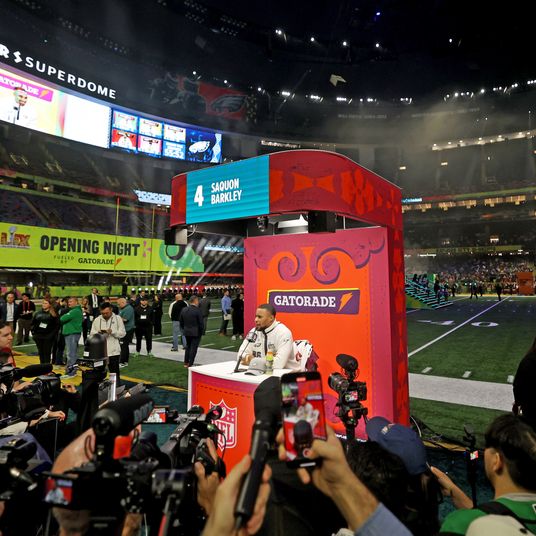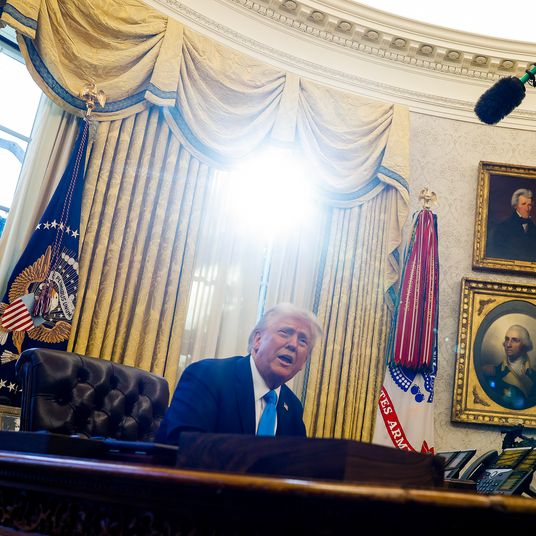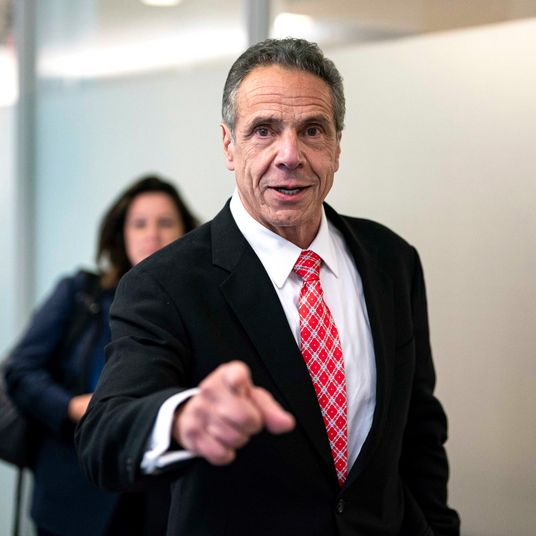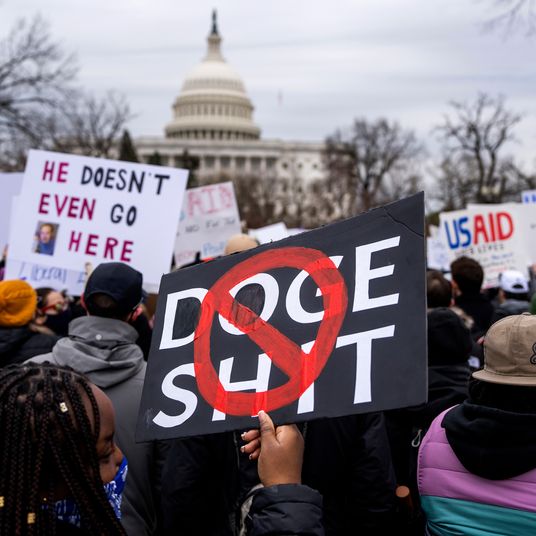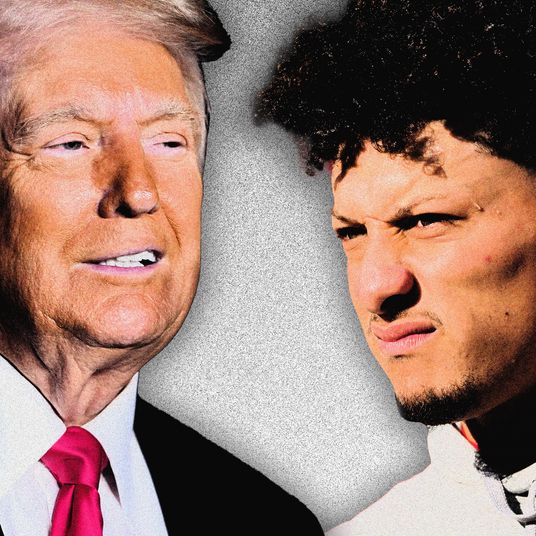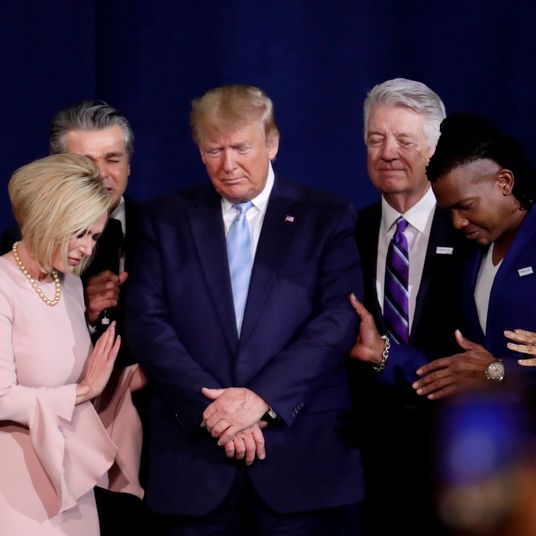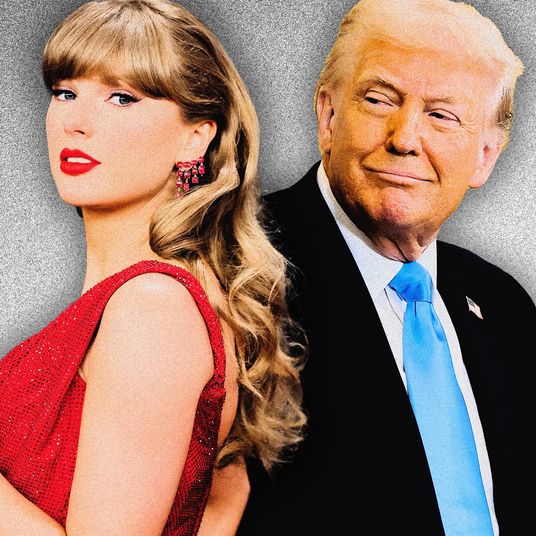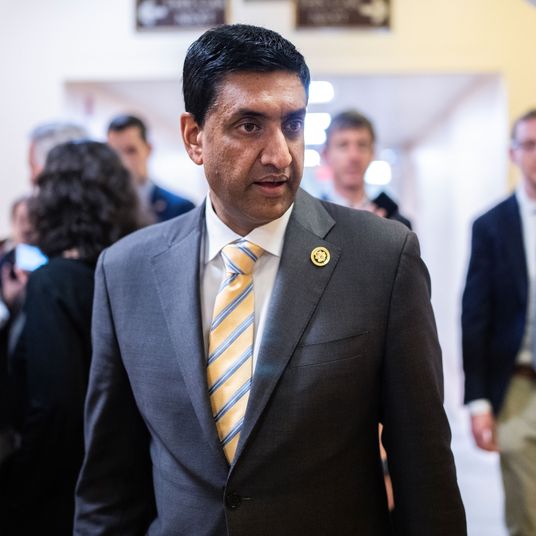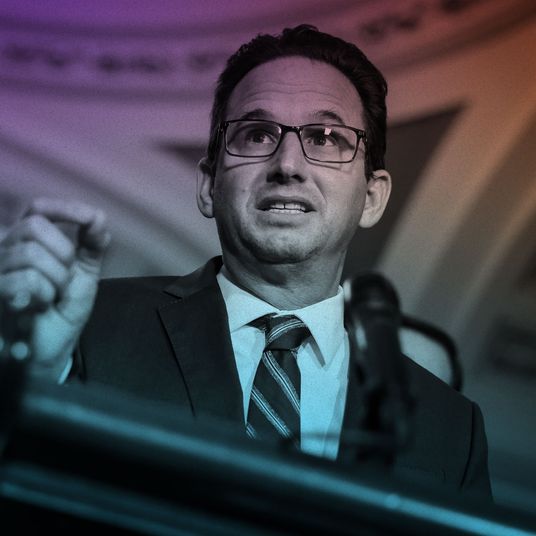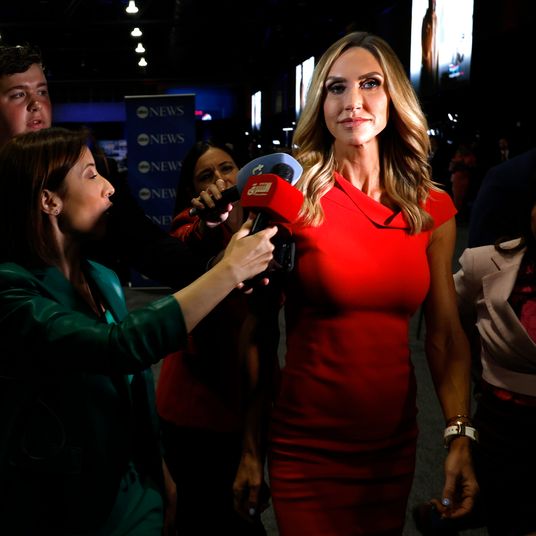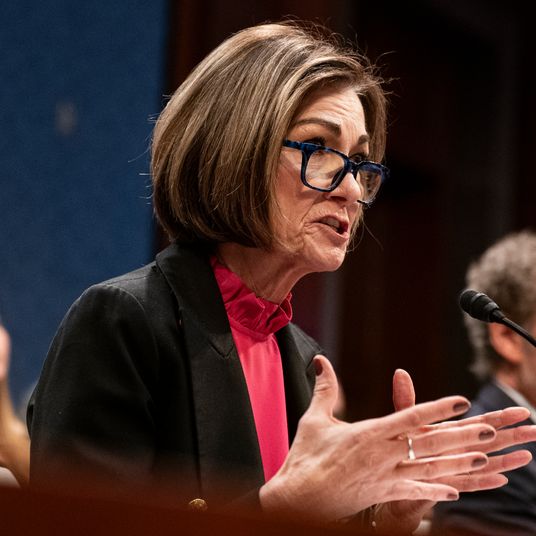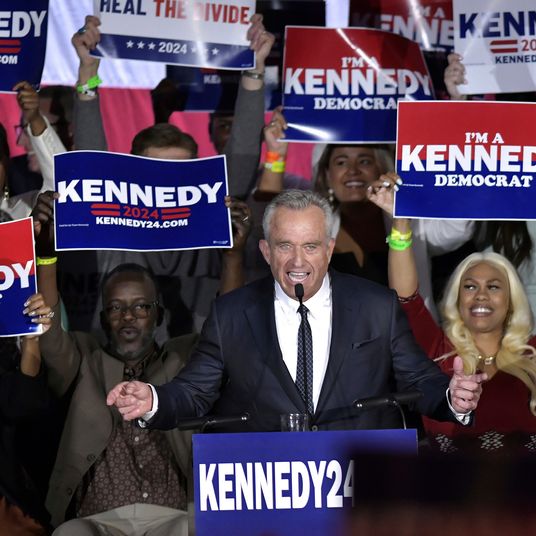
In recent weeks, the American public has learned that Donald Trump’s personal lawyer is under federal investigation; that said lawyer accepted million-dollar-plus payments from major corporations looking to buy access to the White House, and funneled such legal bribes through the same slush fund that he used to deliver a hush payment to a porn star who claims to be the president’s ex-lover; that Trump’s EPA administrator has misspent hundreds of thousands of taxpayer dollars (and that the president believes he’s doing a great job, anyway); that the president repeatedly lied to the public about that porn-star hush payment; and that Trump had pulled the United States out of a functional nuclear agreement with Iran, over the objections of America’s core allies — and a large plurality of the American public.
And the president’s approval rating went up.
In fact, since the start of this year, the percentage of Americans looking on their nation’s leader favorably has risen steadily. This week, that figure hit sights unseen since James Comey’s last days at the FBI.
This has caused liberals no small amount of consternation. But in a new analysis of voters’ attitudes toward Trump — derived from more than a million interviews with voters in all 50 states — SurveyMonkey offers the most satisfying explanation of the president’s improving fortunes to date, while also putting Trump’s rebound in edifying perspective. Here’s a quick rundown of the pollster’s findings:
How Trump has really been performing: Trump’s approval numbers are more remarkable for their stability than their modest gains in recent months. The president enjoyed a honeymoon period in which his favorability rating sat in the mid-40s (SurveyMonkey’s poll is a couple points more favorable to Trump than the average one, but its trend line is consistent with those of virtually every pollster). But that brief period ended after Trump fired Comey — and Republicans passed a heinously unpopular health-care bill out of the House.
Over the ensuing months, as Trump tried and failed to shepherd health-care legislation through Congress, his standing diminished among Republican and independent voters, losing about five percentage points of support from each of those groups. There’s been almost no variation in Democratic attitudes toward Trump — a little over 90 percent of Democrats did not approve of the president on day one, or on any day after.
By December, Trump’s approval rating bottomed out at 40 percent. Then, shortly after he signed his tax cuts into law, his support from Republicans and independents began to steadily rebound. As of this month, the president has regained about three percentage points of support from both those groups since his nadir, in late 2017.
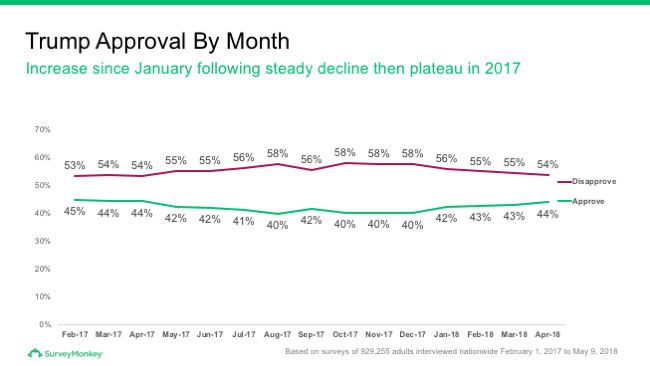
Why Trump’s approval has gone up, even as his scandals have piled up: The vast majority of the American public long ago concluded that Donald Trump is a liar who does not “share their values” or “care about people like them.” But at the start of his presidency, 79 percent of conservative Republicans believed that he could “get things done” — by December 2017, that had fallen to just 60 percent. Once the tax cuts passed, however, conservatives’ confidence in Trump’s “git ’er done” abilities spiked back up into the mid-70s.
Which is to say: While the actual substance of Trump’s tax law is deeply unpopular, even among Republican voters (who oppose deficit-financed tax cuts for the wealthy and corporations), this mattered less to strong GOP partisans than the frustration of seeing their team repeatedly lose high-profile legislative battles. And the sense that Trump was not merely a lecherous liar — but an ineffective one — weakened his position among some Republicans and independents. Once the president proved he could, in fact, “get things done,” however, his image with such voters recovered:
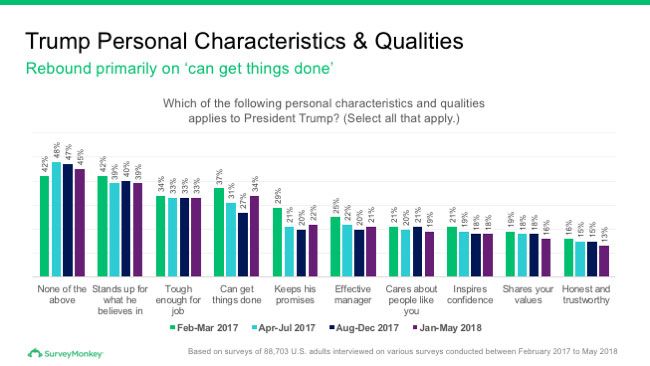
The other wind in Trump’s sails has been the expanding economy. Between early summer 2017 and this month, the public’s approval of the president’s economic management increased by five percentage points, from 44 to 49 percent.
The only people in the U.S. who believe that Trump is honest and pure of heart are too deeply beholden to his cult of personality to change their minds in the wake of any scandal. And for a majority of the public, such scandals only fortify their preexisting disapproval of the president. But there is a small subset of the electorate that sees Trump as a scoundrel, but doesn’t mind, so long as the economy is growing, and Congress appears to be doing things.
Why Trump’s support is softer than meets the eye: Far more Americans strongly disapprove of the president than strongly approve of him. Only 55 percent of Republican voters — and a mere 10 percent of independents — are willing to give their president a ringing endorsement. By contrast, 78 percent of Democrats despise their commander-in-chief.
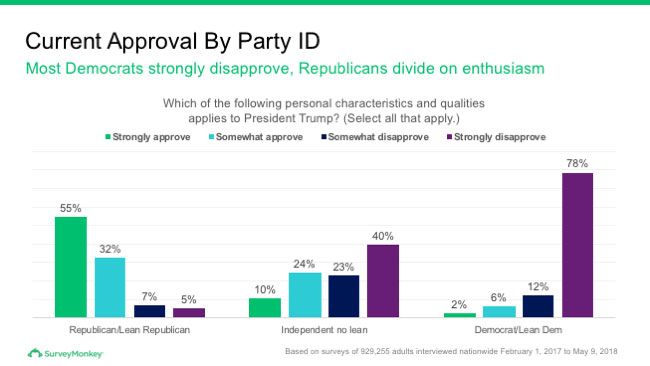
One reason for Trump’s relatively soft Republican support: Younger GOP voters — especially, younger female GOP voters — aren’t too crazy about the guy. While the president enjoys the “strong approval” of 64 percent of Republican men over 45, he gets such affection from just 37 percent of GOP women below that age.
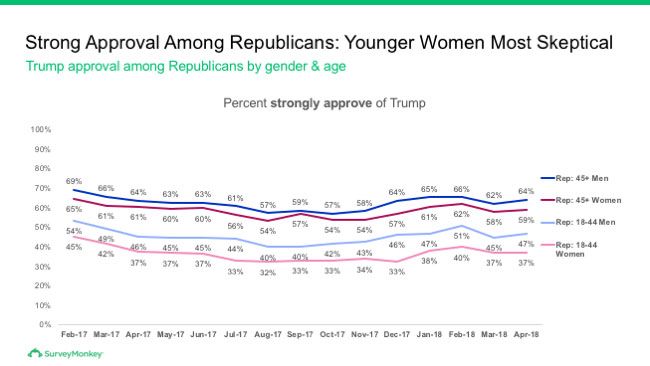
What all this adds up to: Trump came into office a historically unpopular president, and became even more widely disliked by the end of his first year in office. Since then, he has regained some support, but remains less popular than he was on Inauguration Day (when he was very, very unpopular). Much of the support he does have is soft, with a good portion coming from voters who believe he is dishonest and does not share their values. Should economic conditions worsen, it would not be surprising for his approval rating to drop significantly.
But if current trends persist, Trump is unlikely to see his approval rating fall back to where it was in December. His weakness at that point derived from his dearth of legislative accomplishments. The tax cut abolished that liability. And because the House map is skewed so profoundly in the GOP’s favor, it’s quite possible that Trump’s present level of public support could prove robust enough to allow Republicans to retain the House, which would merely require them to keep the margin of their popular-vote loss under about seven percentage points.






